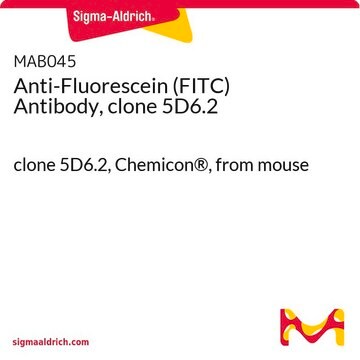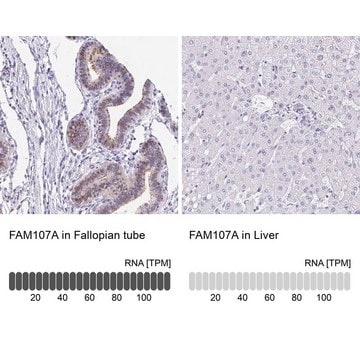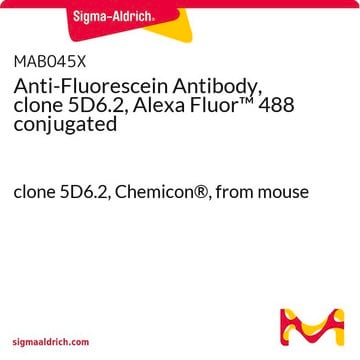11426338910
Roche
Anti-Fluorescein-AP, Fab fragments
from sheep
Sinonimo/i:
antibody
About This Item
Prodotti consigliati
Origine biologica
sheep
Livello qualitativo
Coniugato
alkaline phosphatase conjugate
Forma dell’anticorpo
affinity purified immunoglobulin
Tipo di anticorpo
primary antibodies
Clone
polyclonal
Forma fisica
solution
Confezionamento
pkg of 150 U (200 μl)
Produttore/marchio commerciale
Roche
Isotipo
IgG
Temperatura di conservazione
2-8°C
Categorie correlate
Descrizione generale
Specificità
Applicazioni
- Dot blot
- ELISA
- Immunohistocytochemistry
- In situ hybridization
- Southern blot
- Western blot
- Electrochemical biosensing technique for the detection of 16S rRNA
Azioni biochim/fisiol
Caratteristiche e vantaggi
Solution, stabilized
Nota sulla preparazione
- Working concentration: The following concentrations depend on application and substrate and should be taken as a guideline. Dot blot: 150mU/ml
- ELISA: 150 to 300mU/ml
- Immunohistocytochemistry: 250 to 500mU/ml
- In situ hybridization: 1.5 to 7.5U/ml
- Southern blot: 150mU/ml
- Western blot: 250 to 500 mU/ml
Working solution: 100mM Tris-HCl, 150mM NaCl, pH 7.5. If necessary 1% Blocking reagent (w/v), dry milk powder, 1 to 5% heat inactivated fetal calf serum (v/v) or sheep normal serum can be used for reduction of unspecific binding.
Altre note
Not finding the right product?
Try our Motore di ricerca dei prodotti.
Avvertenze
Warning
Indicazioni di pericolo
Consigli di prudenza
Classi di pericolo
Skin Sens. 1
Classe di pericolosità dell'acqua (WGK)
WGK 1
Punto d’infiammabilità (°F)
No data available
Punto d’infiammabilità (°C)
No data available
Certificati d'analisi (COA)
Cerca il Certificati d'analisi (COA) digitando il numero di lotto/batch corrispondente. I numeri di lotto o di batch sono stampati sull'etichetta dei prodotti dopo la parola ‘Lotto’ o ‘Batch’.
Possiedi già questo prodotto?
I documenti relativi ai prodotti acquistati recentemente sono disponibili nell’Archivio dei documenti.
I clienti hanno visto anche
Il team dei nostri ricercatori vanta grande esperienza in tutte le aree della ricerca quali Life Science, scienza dei materiali, sintesi chimica, cromatografia, discipline analitiche, ecc..
Contatta l'Assistenza Tecnica.











